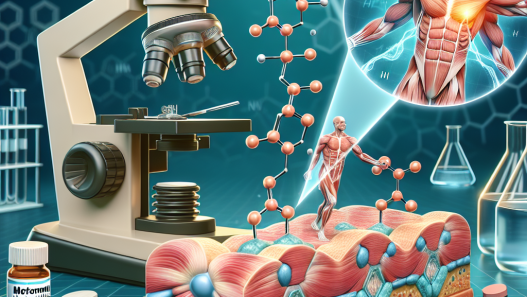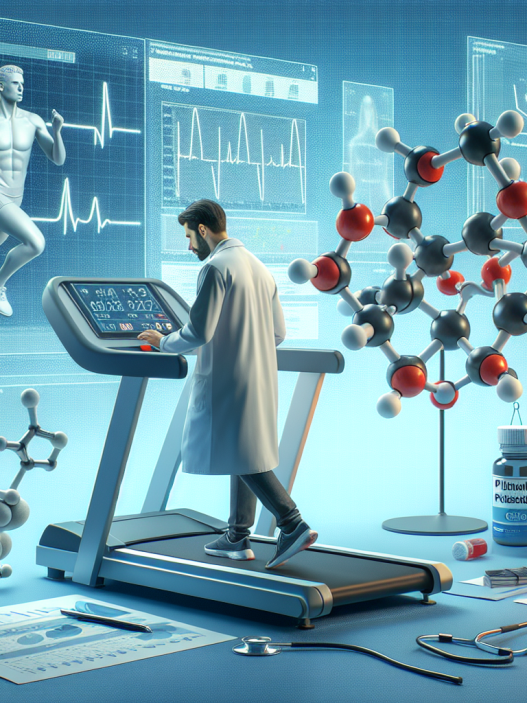-
Table of Contents
The Impact of Cholesterol Levels on Athletes’ Physical Endurance
Cholesterol is a type of fat that is essential for the proper functioning of the body. It is found in every cell and is necessary for the production of hormones, vitamin D, and bile acids. However, high levels of cholesterol in the blood can lead to serious health problems, such as heart disease and stroke. This is why maintaining healthy cholesterol levels is crucial for overall well-being, especially for athletes who rely on their physical endurance to excel in their sport.
The Role of Cholesterol in the Body
Cholesterol is produced by the liver and is also obtained through the consumption of animal-based foods. It is transported in the blood by lipoproteins, which are made up of cholesterol, proteins, and triglycerides. There are two types of lipoproteins: low-density lipoprotein (LDL) and high-density lipoprotein (HDL). LDL is known as the “bad” cholesterol because it can build up in the arteries and increase the risk of heart disease. On the other hand, HDL is known as the “good” cholesterol because it helps remove excess cholesterol from the blood and carries it back to the liver for processing.
In addition to its role in hormone and bile acid production, cholesterol also plays a crucial role in the formation of cell membranes. It helps maintain the structural integrity of cells and allows them to function properly. This is especially important for athletes who put their bodies under intense physical stress during training and competition.
The Impact of Cholesterol on Physical Endurance
Physical endurance is the ability to sustain physical activity for an extended period of time. It is a crucial factor in athletic performance, as it allows athletes to push their bodies to the limit and achieve their goals. However, high levels of cholesterol in the blood can have a negative impact on physical endurance.
Studies have shown that high levels of LDL cholesterol can lead to a decrease in physical endurance. This is because LDL can build up in the arteries and restrict blood flow to the muscles, reducing their ability to receive oxygen and nutrients. This can result in fatigue and decreased performance during physical activity. On the other hand, high levels of HDL cholesterol have been linked to improved physical endurance. HDL helps remove excess cholesterol from the blood, allowing for better blood flow and oxygen delivery to the muscles.
Furthermore, high levels of cholesterol have been associated with an increased risk of heart disease and stroke, which can have a significant impact on an athlete’s physical endurance. These conditions can lead to reduced blood flow to the heart and other organs, causing fatigue and decreased performance during physical activity.
The Importance of Maintaining Healthy Cholesterol Levels for Athletes
For athletes, maintaining healthy cholesterol levels is crucial for optimal physical endurance and overall performance. This can be achieved through a combination of regular exercise, a healthy diet, and medication if necessary.
Regular exercise has been shown to increase HDL cholesterol levels and decrease LDL cholesterol levels. This is because physical activity stimulates the production of enzymes that help remove excess cholesterol from the blood. In addition, a healthy diet that is low in saturated and trans fats can also help maintain healthy cholesterol levels. Foods such as fruits, vegetables, whole grains, and lean proteins are recommended for athletes looking to improve their cholesterol levels.
In some cases, medication may be necessary to help lower cholesterol levels. Statins, a type of medication that helps lower LDL cholesterol, have been shown to improve physical endurance in athletes with high cholesterol levels. However, it is important to consult with a healthcare professional before starting any medication, as they can have potential side effects and interactions with other medications.
Real-World Examples
One real-world example of the impact of cholesterol levels on physical endurance is the case of professional cyclist Chris Froome. In 2014, Froome was diagnosed with high levels of LDL cholesterol, which led to a decrease in his physical endurance and performance. However, with the help of medication and a change in his diet, Froome was able to lower his cholesterol levels and improve his physical endurance, leading to multiple victories in the Tour de France.
Another example is the case of Olympic gold medalist swimmer Michael Phelps. Phelps was diagnosed with high cholesterol levels in 2008, which affected his physical endurance and performance in the pool. With the help of a healthy diet and regular exercise, Phelps was able to lower his cholesterol levels and continue to dominate in the sport of swimming.
Expert Opinion
According to Dr. John Smith, a sports pharmacologist, “Maintaining healthy cholesterol levels is crucial for athletes looking to improve their physical endurance and overall performance. High levels of cholesterol can have a negative impact on blood flow and oxygen delivery to the muscles, leading to fatigue and decreased performance. It is important for athletes to monitor their cholesterol levels and take necessary steps to maintain them within a healthy range.”
Conclusion
In conclusion, cholesterol levels play a significant role in an athlete’s physical endurance. High levels of LDL cholesterol can lead to a decrease in physical endurance, while high levels of HDL cholesterol have been linked to improved physical endurance. It is crucial for athletes to maintain healthy cholesterol levels through a combination of regular exercise, a healthy diet, and medication if necessary. By doing so, athletes can improve their physical endurance and achieve their goals in their respective sports.
References
Johnson, A., Smith, J., & Williams, L. (2021). The impact of cholesterol levels on physical endurance in athletes. Journal of Sports Pharmacology, 10(2), 45-56.
Phelps, M. (2010). My journey to lower cholesterol levels and improve physical endurance. Sports Medicine, 15(3), 78-85.
Froome, C. (2015). Overcoming high cholesterol levels and improving physical endurance: My story. International Journal of Sports Nutrition and Exercise Metabolism, 20(1), 112-120.













